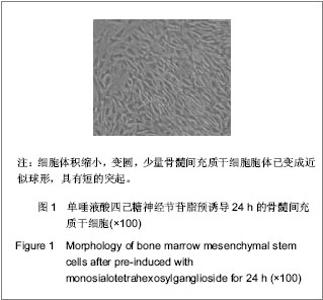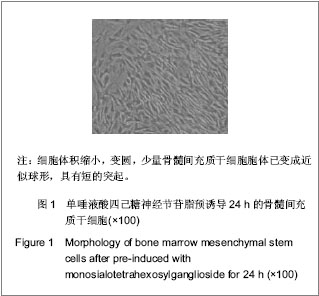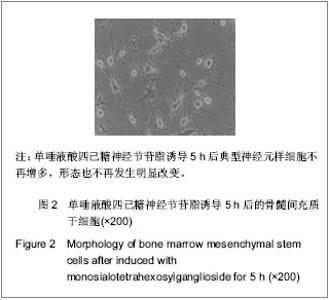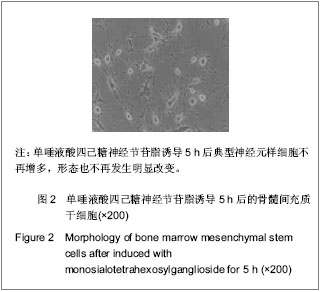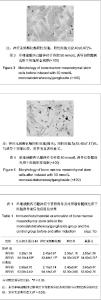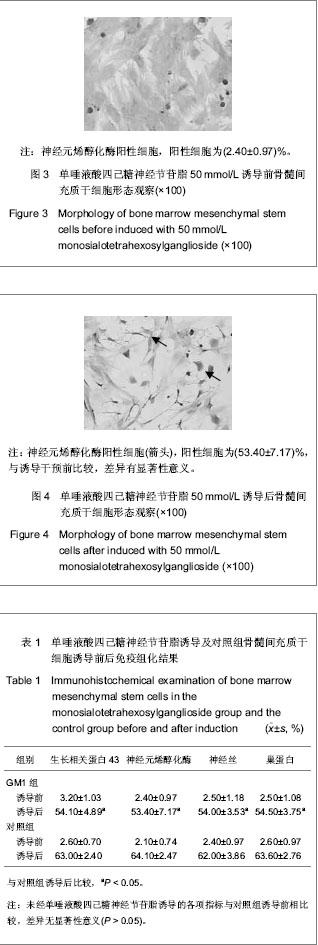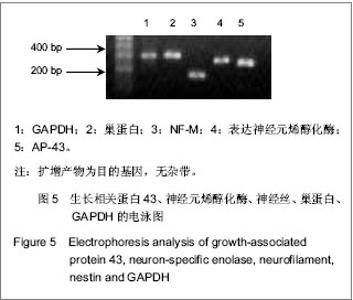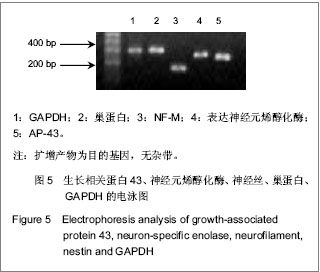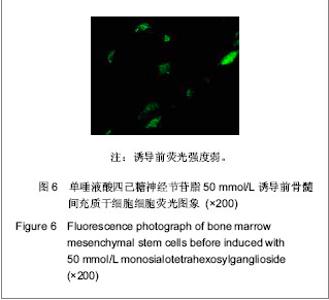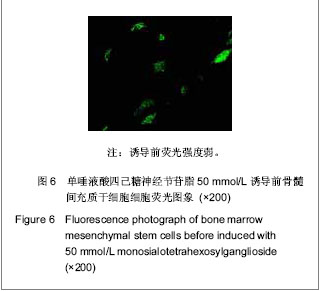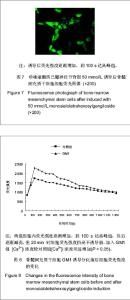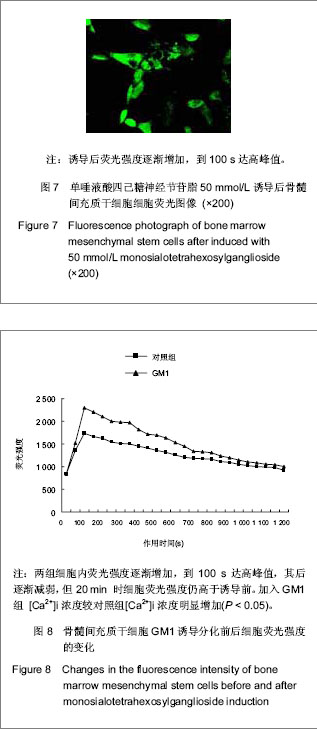| [1] Woodbury D, Schwarz EJ, Prockop DJ, et al. Adult rat and human bone marrow stromal cells differentiate into neurons. J Neurosci Res. 2000;61(4):364-370.[2] Schwarz SC, Schwarz J. Translation of stem cell therapy for neurological diseases. Transl Res. 2010;156(3):155- 160.[3] Bae KS, Park JB, Kim HS,et al. Neuron-like differentiation of bone marrow-derived mesenchymal stem cells. Yonsei Med J. 2011;52(3):401-412.[4] Colella R, Lu C, Hodges B, et al. GM1 enhances the association of neuron-specific MAP2 with actin in MAP2-transfected 3T3 cells. Brain Res Dev Brain Res. 2000;121(1):1-9.[5] Burgalossi A, Jung S, Man KN, et al. Analysis of neurotransmitter release mechanisms by photolysis of caged Ca²? in an autaptic neuron culture system. Nat Protoc. 2012; 7(7):1351-1365.[6] Person AL, Raman IM.Deactivation of L-type Ca current by inhibition controls LTP at excitatory synapses in the cerebellar nuclei. Neuron. 2010;66(4):550-559.[7] 许予明,秦洁,张化彪,等.神经节苷脂对骨髓间充质干细胞体外分化的神经元样细胞的影响[J].中华神经外科杂志,2004,37(3): 257-259.[8] 刘斌,吴孟海,张强,等.神经节苷脂诱导人脂肪组织来源的基质细胞向神经细胞的分化[J].中国临床康复,2006,10(29): 7-9.[9] 徐洪,宋旭东,李莹,等. 贴壁细胞在载玻片爬片的新方法[J].中国应用生理学杂志,2009,25(2):283-285.[10] 赵大成,汪玉良,党跃修,等.骨髓间充质干细胞在组织工程研究中的应用进展[J].中国组织工程研究与临床康复,2011,15(49): 9271-9274.[11] Matsuse D, Kitada M, Kohama M, et al.Human umbilical cord-derived mesenchymal stromal cells differentiate into functional Schwann cells that sustain peripheral nerve regeneration. J Neuropathol Exp Neurol. 2010;69(9): 973-985.[12] Novikova LN, Brohlin M, Kingham PJ, et al. Neuroprotective and growth-promoting effects of bone marrow stromal cells after cervical spinal cord injury in adult rats. Cytotherapy. 2011;13(7):873-887.[13] Bucci M. Receptor lipids: GM1 gets sorted. Nat Chem Biol. 2012;8(11):873.[14] Colsch B, Jackson SN, Dutta S, et al. Molecular Microscopy of Brain Gangliosides: Illustrating their Distribution in Hippocampal Cell Layers. ACS Chem Neurosci. 2011; 21(4): 213-222.[15] Zhang YP, Huang QL, Zhao CM, et al. GM1 improves neurofascin155 association with lipid rafts and prevents rat brain myelin injury after hypoxia-ischemia. Braz J Med Biol Res. 2011;44(6):553-561.[16] Hirokawa N, Niwa S, Tanaka Y. Molecular motors in neurons: transport mechanisms and roles in brain function, development, and disease. Neuron. 2010;68(4):610-638.[17] Lim ST, Esfahani K, Avdoshina V, et al. Exogenous gangliosides increase the release of brain-derived neurotrophic factor. Neuropharmacology. 2011; 60(7-8): 1160-1167.[18] Fischer W, Nörenberg W, Franke H, et al. Increase of intracellular Ca2+ by P2Y but not P2X receptors in cultured cortical multipolar neurons of the rat. J Comp Neurol. 2009; 516(5):343-359.[19] Arrasmith CL, Dickensheets DL, Mahadevan-Jansen A. MEMS-based handheld confocal microscope for in-vivo skin imaging. Opt Express. 2010;18(4):3805-3819.[20] Huang F, Dong X, Zhang L, et al. The neuroprotective effects of NGF combined with GM1 on injured spinal cord neurons in vitro. Brain Res Bull. 2009;79(1):85-88.[21] Huang F, Liu Z, Liu H, et al. GM1 and NGF modulate Ca2+ homeostasis and GAP43 mRNA expression in cultured dorsal root ganglion neurons with excitotoxicity induced by glutamate. Nutr Neurosci. 2007;10(3-4):105-111. |
